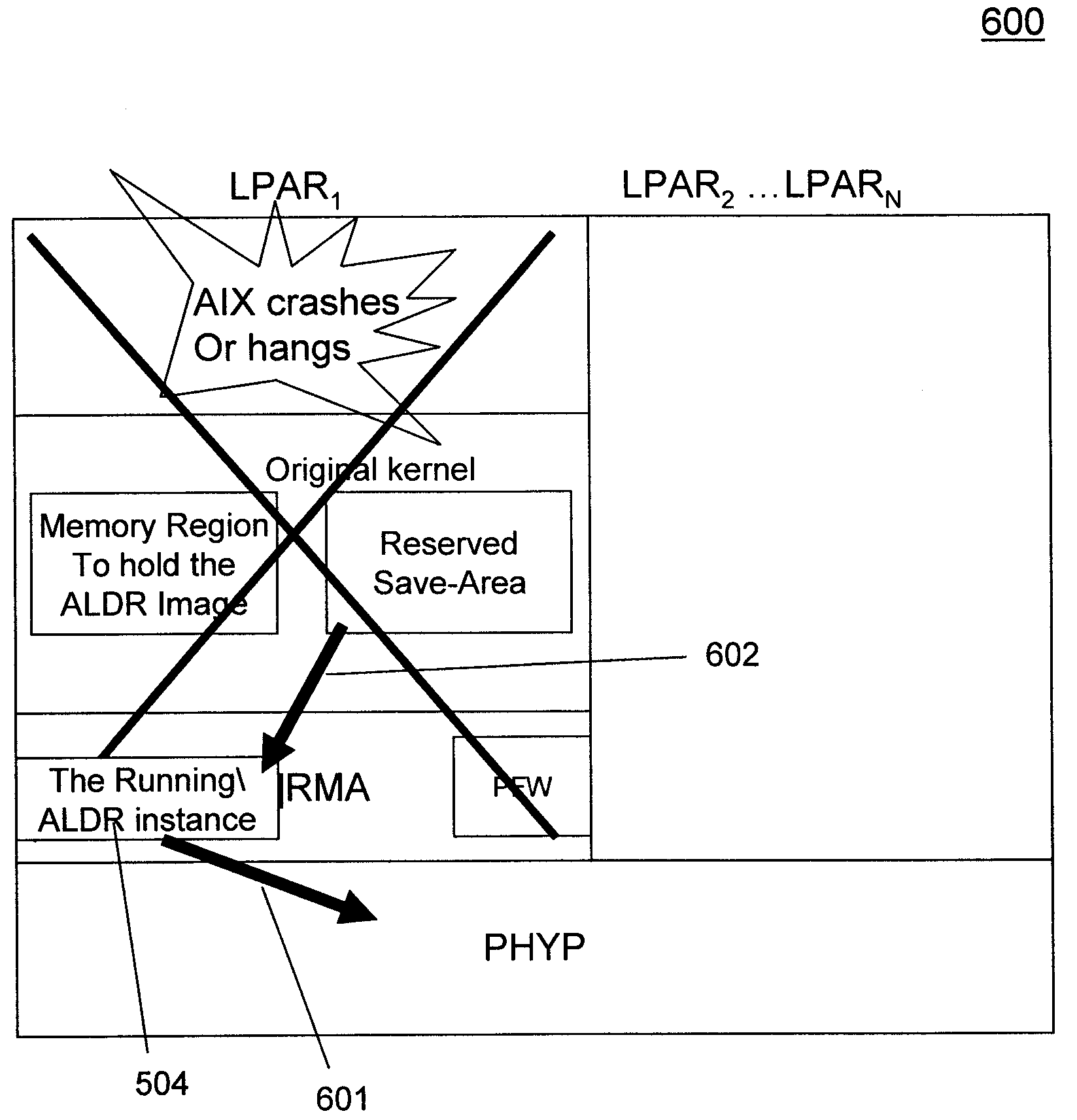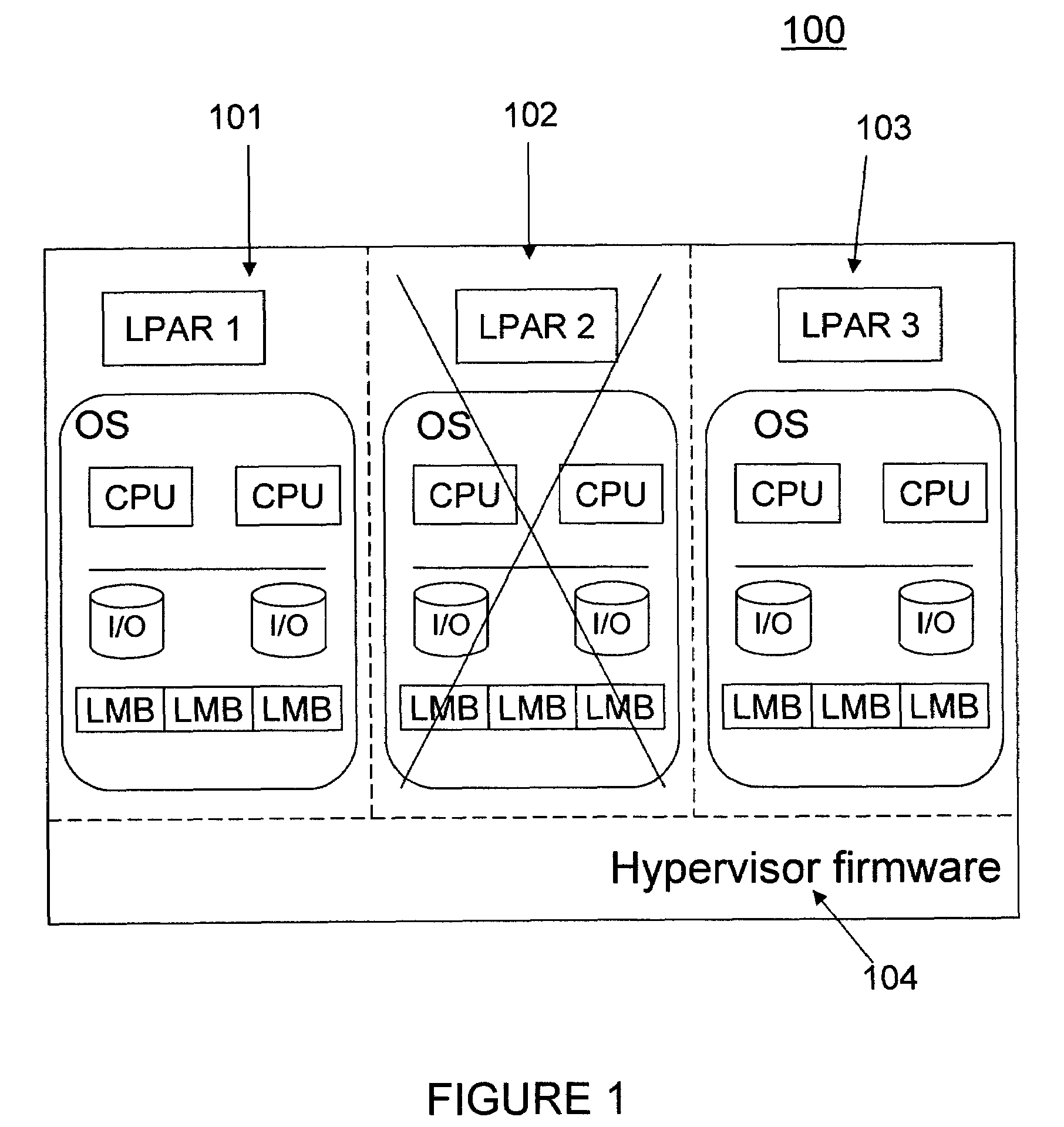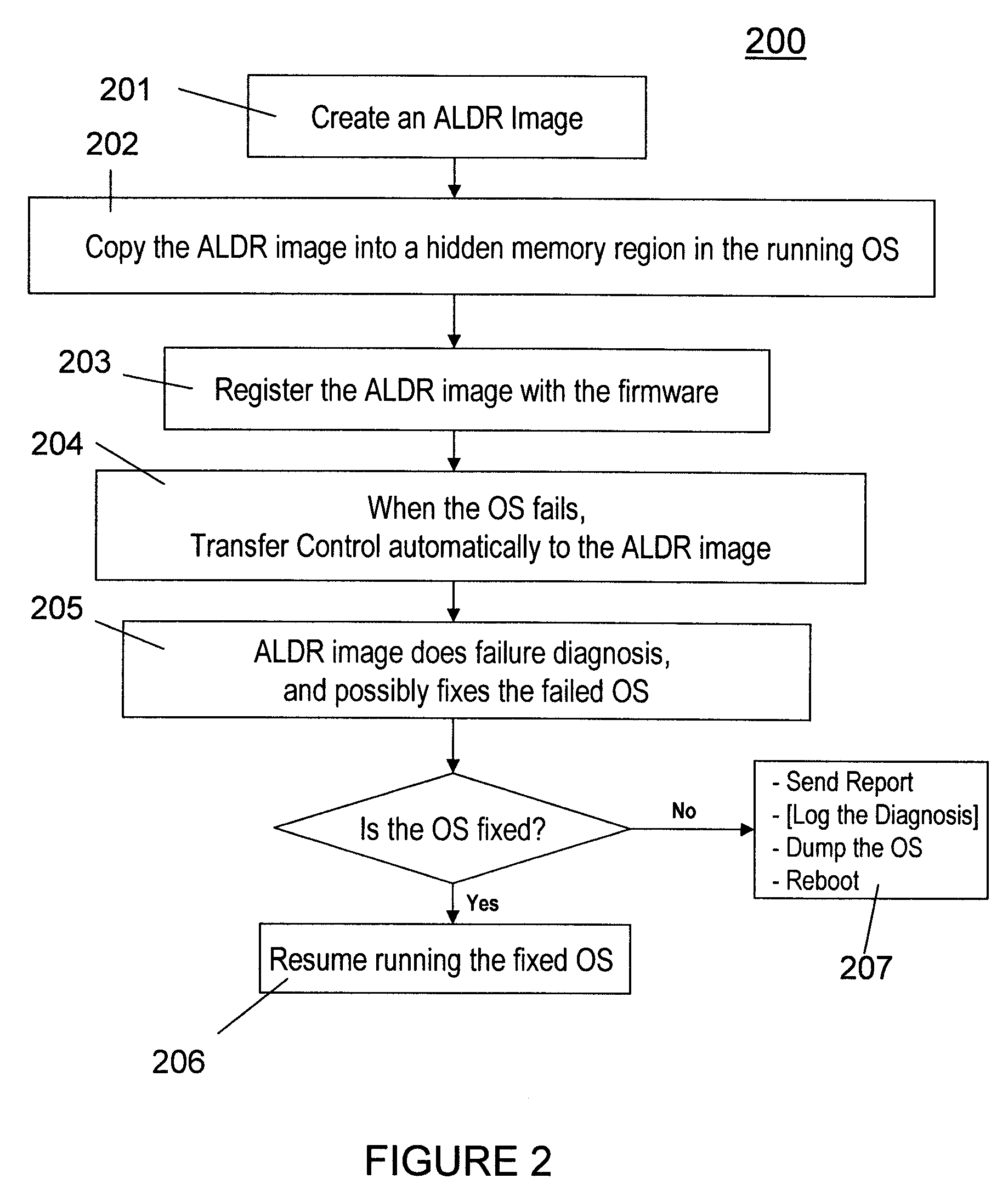Automated transition to a recovery kernel via firmware-assisted-dump flows providing automated operating system diagnosis and repair
a recovery kernel and firmware technology, applied in memory systems, memory adressing/allocation/relocation, instruments, etc., can solve the problems of system in a non-diagnosable state, system time-consuming, vendor support team may not have access to all
- Summary
- Abstract
- Description
- Claims
- Application Information
AI Technical Summary
Benefits of technology
Problems solved by technology
Method used
Image
Examples
Embodiment Construction
[0036]Referring now to the drawings and more particularly to FIGS. 2-11, an exemplary embodiment of the method and structures according to the present invention will now be explained.
[0037]The exemplary embodiment explained in detail in the following discussion is described in the environment of AIX (Advanced Interactive eXecutive), which is the name given to a series of proprietary operating systems sold by IBM for several of its computer system platforms, based on UNIX System V with 4.3BSD-compatible command and programming interface extensions. However, the concepts of the present invention are clearly more general than this specific environment.
[0038]The present invention provides a mechanism that will automatically produce an accurate diagnostic report and, possibly, revive a crashed or hung AIX OS instance,
hence reducing outages and service time. Such automation of diagnosis and recovery is much more effective than a remote technical support team of people trying to obtain and...
PUM
 Login to View More
Login to View More Abstract
Description
Claims
Application Information
 Login to View More
Login to View More - R&D
- Intellectual Property
- Life Sciences
- Materials
- Tech Scout
- Unparalleled Data Quality
- Higher Quality Content
- 60% Fewer Hallucinations
Browse by: Latest US Patents, China's latest patents, Technical Efficacy Thesaurus, Application Domain, Technology Topic, Popular Technical Reports.
© 2025 PatSnap. All rights reserved.Legal|Privacy policy|Modern Slavery Act Transparency Statement|Sitemap|About US| Contact US: help@patsnap.com



